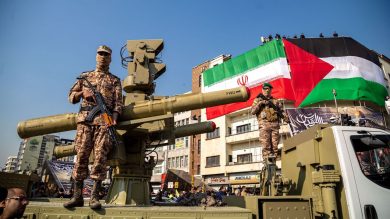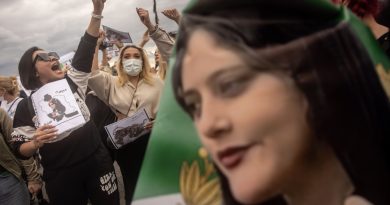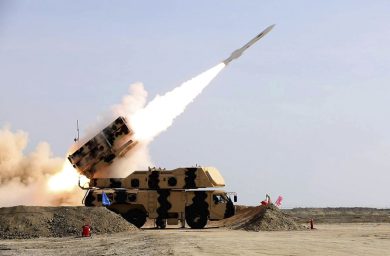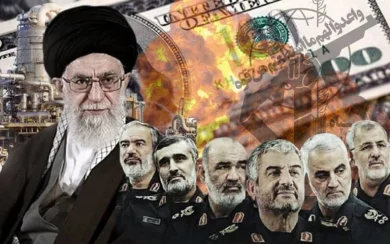For decades, Iranian women have been at the forefront of social, political, and human rights movements, despite systematic repression by the Islamic Republic and its enforcer, the IRGC. Their resistance has demonstrated that women’s leadership is not just necessary for gender equality—it is essential for Iran’s democratic future.
The “Women, Life, Freedom” movement, which gained global recognition after the death of Mahsa Amini in 2022, has become a powerful force for change. Iranian women, whether through protests, activism, digital resistance, or leadership in civil society, have proven that they are the true architects of Iran’s future democracy.
This analysis explores:
• The historical role of women in Iran’s political movements
• Why women’s leadership is crucial for a democratic Iran
• How the IRGC suppresses women’s activism
• The role of global solidarity in supporting Iranian women
1. The Historical Role of Women in Iran’s Political Movements
A. Women’s Activism Before the Islamic Revolution
Before 1979, Iranian women were making strides toward social and political equality:
• Gaining voting rights (1963) under the Pahlavi monarchy.
• Expanding access to education and employment.
• Participating in political movements demanding modernization and civil rights.
However, the 1979 Islamic Revolution reversed many of these achievements, imposing:
• Compulsory hijab laws.
• Gender segregation in education and public spaces.
• Legal discrimination in marriage, divorce, and inheritance.
Despite these setbacks, women’s activism never stopped.
B. Women at the Center of Every Major Protest
Iranian women have been key players in every major uprising against the regime:
• 2009 Green Movement: Women were visible leaders in protests against electoral fraud.
• 2017-2018 Economic Protests: Women connected economic injustice to gender inequality.
• 2022 “Women, Life, Freedom” Uprising: Women’s demands for bodily autonomy transformed into a broader call for democracy.
This consistent presence in resistance movements proves that Iran’s democracy cannot exist without women’s leadership.
2. Why Women’s Leadership is Crucial for Iran’s Democratic Future
A. Women’s Struggles Are Linked to Democracy
A country’s commitment to democracy can often be measured by its treatment of women. In Iran, women’s:
✔ Right to choose their dress
✔ Right to political participation
✔ Right to economic independence
…are systematically suppressed, showing that Iran’s authoritarianism is directly linked to gender oppression.
A free Iran must be one where women are equal—and this requires women’s leadership in shaping democratic reforms.
B. Women Can Unite Diverse Movements
Iran’s opposition movements often struggle with internal divisions. However, women’s movements:
✔ Bridge ethnic and class divides.
✔ Attract youth and grassroots support.
✔ Challenge both authoritarianism and patriarchy simultaneously.
Because of their intersectional struggle, women’s leadership creates unity where other movements fail.
C. Women’s Leadership is Already Strong—Despite Repression
Even with limited legal rights, Iranian women have:
✔ Led protests against government corruption.
✔ Built underground activist networks.
✔ Used social media to expose human rights abuses.
This informal leadership is evidence that, in a democratic Iran, women would be at the forefront of political change.
3. The IRGC’s War Against Women’s Activism
A. Targeting Women Leaders
The IRGC sees women activists as a major threat. Their response includes:
• Imprisoning female journalists, lawyers, and human rights defenders.
• Enforcing strict internet censorship to silence digital activism.
• Using sexual violence as a tool of repression against female detainees.
Examples include:
✔ Narges Mohammadi – A human rights activist repeatedly jailed for defending women’s rights.
✔ Nasrin Sotoudeh – A lawyer sentenced to 38 years for defending women protesting forced hijab laws.
B. Restricting Women’s Political Participation
The IRGC-controlled regime ensures that:
• Women are barred from running for president.
• Women face severe restrictions in parliament and government positions.
• Women’s organizations are banned or heavily monitored.
Despite these barriers, Iranian women persist, showing their natural ability to lead even under extreme oppression.
4. Global Solidarity: Supporting Iranian Women’s Leadership
A. Why the World Must Act
Oppressive regimes thrive in silence. The IRGC’s war against women is strengthened by:
• Lack of international accountability.
• Minimal diplomatic consequences for human rights violations.
• Weak global support for Iranian women activists.
The world must recognize that Iranian women’s fight is a fight for democracy itself.
B. How the International Community Can Help
1. Sanction the IRGC for Gender-Based Oppression
✔ Governments should designate the IRGC as a terrorist organization.
✔ Sanctions should target IRGC leaders responsible for imprisoning women activists.
2. Provide Digital Support
✔ Tech companies should offer secure internet tools to protect Iranian women activists.
✔ Social media platforms must combat IRGC disinformation campaigns.
3. Support Women’s Leadership in Exile
✔ Governments must offer asylum to Iranian women activists at risk.
✔ Global institutions should fund Iranian women-led initiatives for democracy.
5. Women’s Leadership Will Shape a Free Iran
A. Women in a Post-Regime Iran
When Iran transitions to democracy, women will be essential in rebuilding:
✔ Legal systems that protect women’s rights.
✔ Economic policies ensuring gender equality.
✔ Educational reforms removing gender discrimination.
Women aren’t just fighting for freedom—they are preparing to lead a new, democratic Iran.
B. Examples of Women-Led Democratic Change
Across the world, women’s leadership has shaped post-authoritarian transitions:
✔ South Africa: Women played a critical role in the post-apartheid government.
✔ Eastern Europe: Women led democratic movements after the fall of communism.
✔ Sudan: Women’s activism helped overthrow dictatorship and push for democratic reforms.
Iran is no different—the fight for democracy and women’s rights are one and the same.
Conclusion: Women Are the Future of Iran’s Democracy
Iranian women have:
✔ Led every major protest for change.
✔ Defied IRGC repression with bravery.
✔ Built networks of activism inside and outside Iran.
The future of Iran’s democracy depends on them. Without women’s leadership, Iran cannot be free.
What the World Must Do Now:
✔ Recognize Iranian women’s fight as a democratic struggle.
✔ Sanction IRGC officials responsible for gender oppression.
✔ Amplify women’s voices through media and international advocacy.
Join Our Newsletter!
Stay informed with the latest updates, news, and ways to take action in the fight for justice and global security. Sign up now to get updates delivered straight to your inbox!





